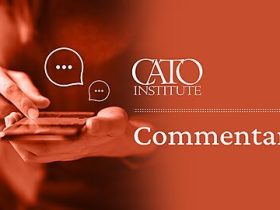Jeffrey Miron
In most industries, firms that want to enter face no legal restraints.
In health care, however, many new entrants must comply with certificate-of-need laws, which require government approval of “creations, acquisitions, or expansions of healthcare facilities.”
Standard economics suggests this will harm patients by limiting supply and raising prices. The claims that such laws maintain quality or reduce costs are self-serving assertions from the incumbent suppliers (see “Bootleggers and Baptists”).
New research confirms the standard perspective:
A century ago, only 5 percent of Americans were 65 or older. Today, that figure is about 17 percent, and it is projected to reach 23 percent by 2050. This demographic shift poses a two-headed challenge: How can our society provide health care access to a rapidly growing population of seniors with extensive and increasingly specialized health care needs without further straining an already unsustainable federal budget? Regulations pose many barriers. For example, certificate-of-need (CON) laws restrict the entry and expansion of health care facilities in 35 states.
The findings are quite clear:
Our research examines the staggered repeal of CON laws for LTACs [long-term acute care hospitals] in 10 states between 1984 and 2018. Our findings reveal that repealing CON laws increased the number of LTACs by 69 percent … and added an average of 558 certified beds per million elderly residents.… Our findings [also] reveal that when LTACs entered the nursing home market, they decreased the rate at which patients in SNFs [skilled nursing facilities] were rehospitalized by 5.9 percent, the number of patients who fell while in care by 5.3 percent, and the number of patients who were physically restrained to their beds by 13 percent. These findings suggest that LTAC entry relieves pressure on SNFs and other health care providers. … Policymakers in states that continue to cling to CON laws should ask themselves: Will we double down on policies that have been shown not to work, or will we clear the way for a more competitive, innovative, and dynamic approach?
Exactly.









